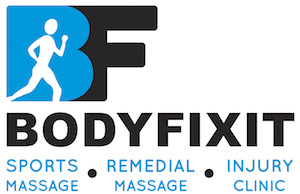Maintaining a garden is vigorous work, which means it can also be taxing on your body. Spending hours hunched over your beds can lead to everything from a stiff neck to achy, bruised knees. Fortunately, it’s easy to avoid most garden-related injuries entirely, but if you do find yourself grappling with some discomfort, our tips will help you manage.
First, know that some discomfort is normal
A stiff neck, tight knees, and sore back are all common symptoms of holding certain positions for too long. Specific to gardening, the back of the neck may become irritated from a sustained position of looking downward towards the plants you are tending. This bodily arrangement can overload the sub-occipital tissues, which are a collection of muscles, tendons, and ligaments that run from your neck up to the base of your skull.
Tension, pain, and or irritation to these structures can trigger local muscle aches, headaches, or even radiating pain to surrounding areas. If your pain is concentrated lower, your knees might be fatigued from all that bending; this is known as knee flexion. And if you already have knee arthritis, then a deep knee bend usually doesn’t feel good, especially when combined with the direct pressure that comes with kneeling.
|
|
7 Benefits of Gardening That Prove It Helps Your Mind and Body
Good news for those who already spend hours planting perennials: Gardening is considered moderate-intensity exercise. You can burn about 330 calories doing one hour of light gardening and yard work.
Just 30 minutes of moderate-level physical activity most days of the week can prevent and control high blood pressure.
When you’re outdoors and your skin is exposed to the sun, it prompts your body to make vitamin D.
Besides the physical exercise you’ll get tending to a vegetable garden, a productive plot can also promote a better diet by supplying fresh, healthy produce.

Gardening is positively correlated with a reduction in depression and anxiety symptoms. In fact, some hospitals even use planting and flower arranging as a type of rehabilitation for people recovering from injuries, strokes, surgeries, and other conditions.
You don’t have to weed alone – nor should you. People who worked in allotment gardens had significantly better self-esteem, total mood disturbance, and general health compared to those who did not garden a study found. Even better, it’s something almost anyone can partake in.
The act of growing plants may also help boost your mood.
“Growing something green, something real, something alive, is a hopeful thing to do.”

References: https://www.
Images: www.freepik.com




